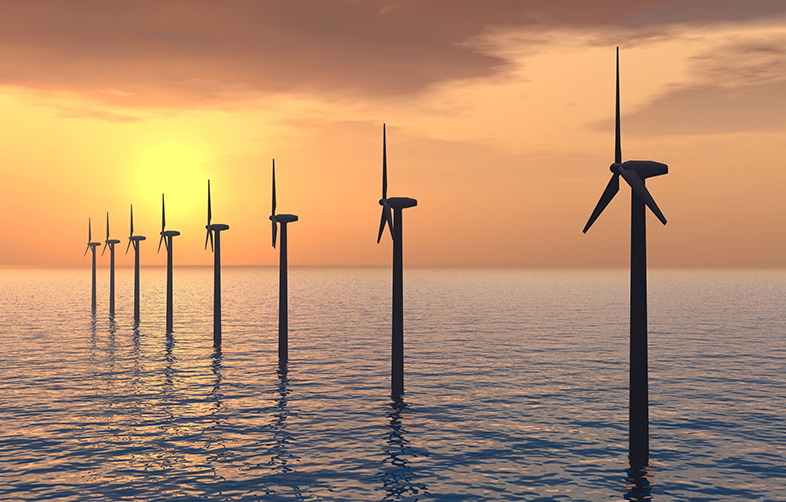6 Varieties of solar collector
Just as solar space heating systems can have several variants, so can solar collectors. The most common types for low temperature use are:
Unglazed panels
These are most suitable for swimming pool heating, as it’s only necessary for the water temperature to rise by a few degrees above ambient air temperature, so heat losses are relatively unimportant.
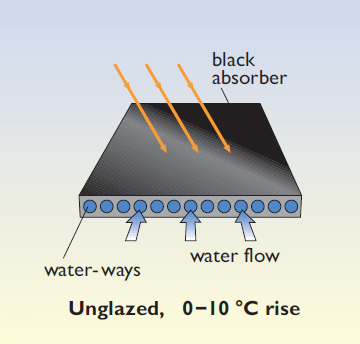
Glazed flat plate water collectors
These are the mainstay of domestic solar water heating They are usually single glazed but may have an additional second glazing layer, with a more elaborate glazing system a higher temperature difference can be sustained between the absorber and the external air.
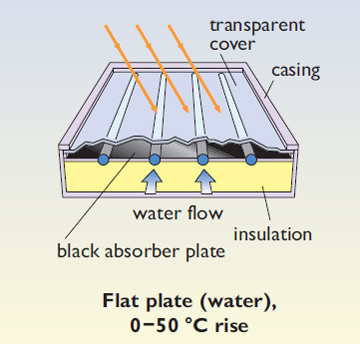
Flat plate air collectors
These are not so common as water collectors and are mainly used for applications such as supplying warm air for crop drying.
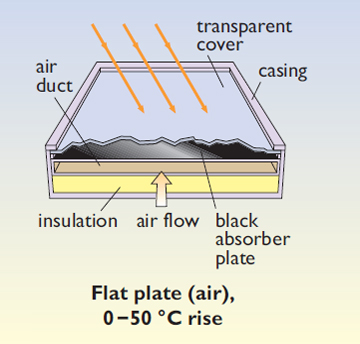
Evacuated tube collectors
The example shown in Figure 17 takes the form of a set of tubes similar to fluorescent tubular lamps. The absorber plate is a metal strip running down the centre of each tube. Heat losses due to convection are suppressed by a vacuum in the tube. The absorber plate uses a special ‘heat pipe’ to carry the collected energy to the water, which circulates along a header pipe at the top of the array. These collectors are generally more expensive than flat plate ones, but they have lower heat losses, allowing a better performance in winter.
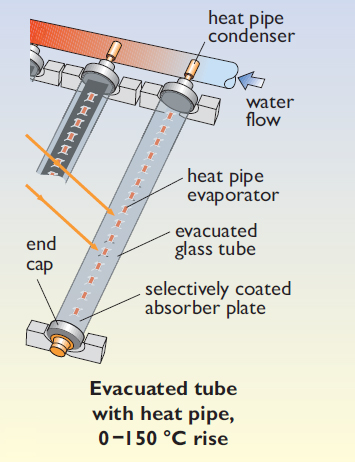
We now move from describing the use of solar energy on individual buildings to looking at its use on a larger scale, such as supplying heat to an entire district.
